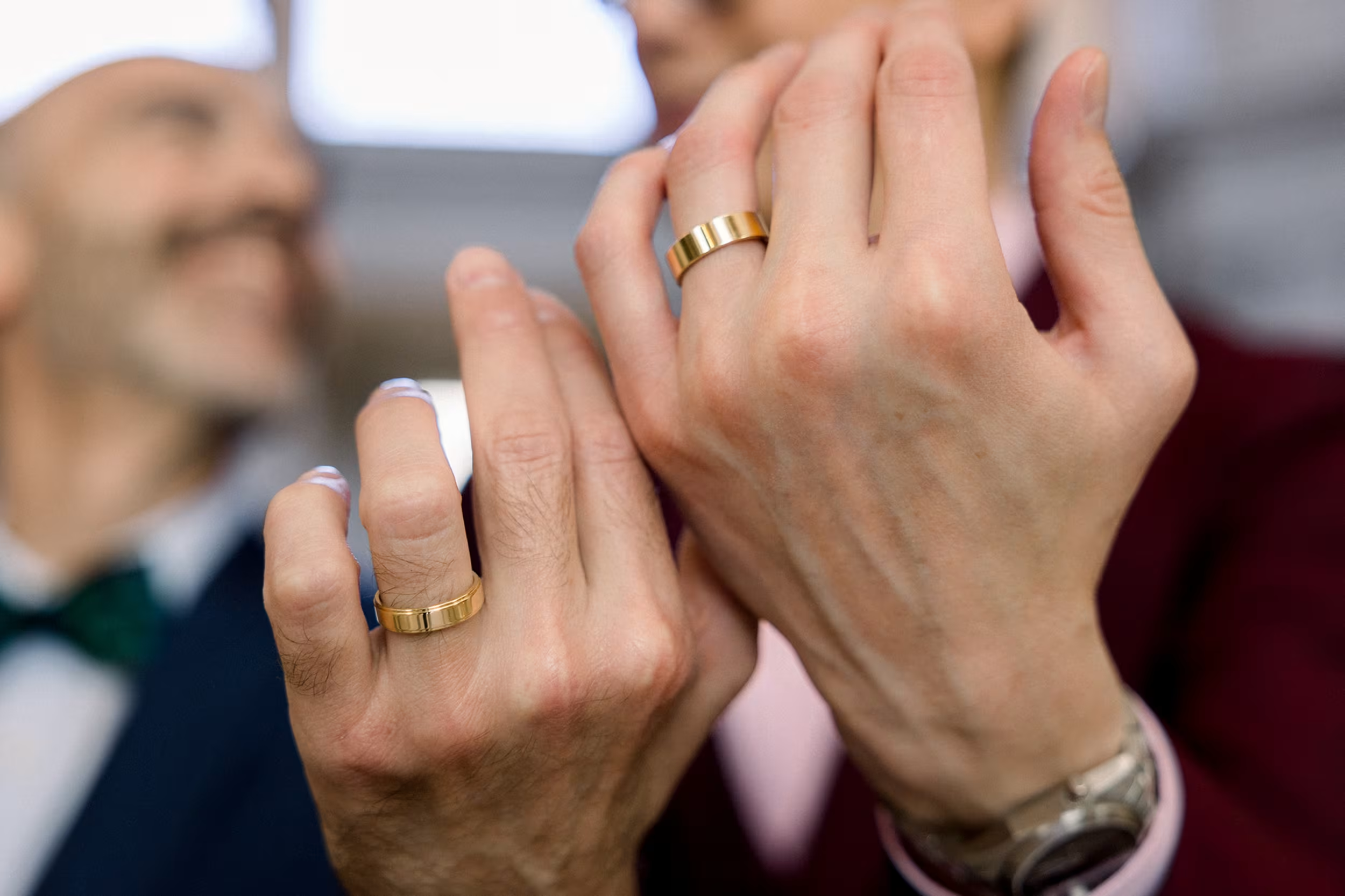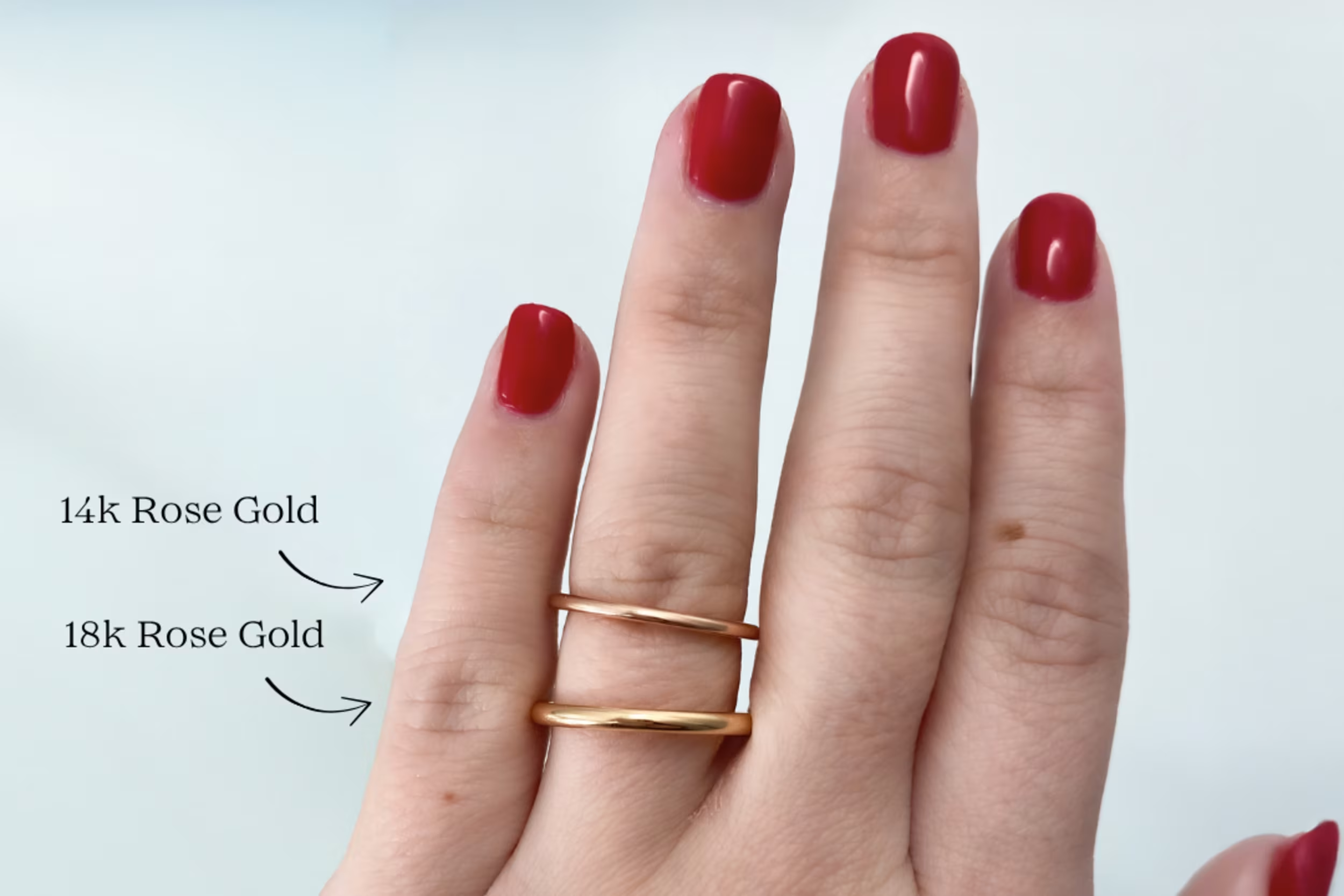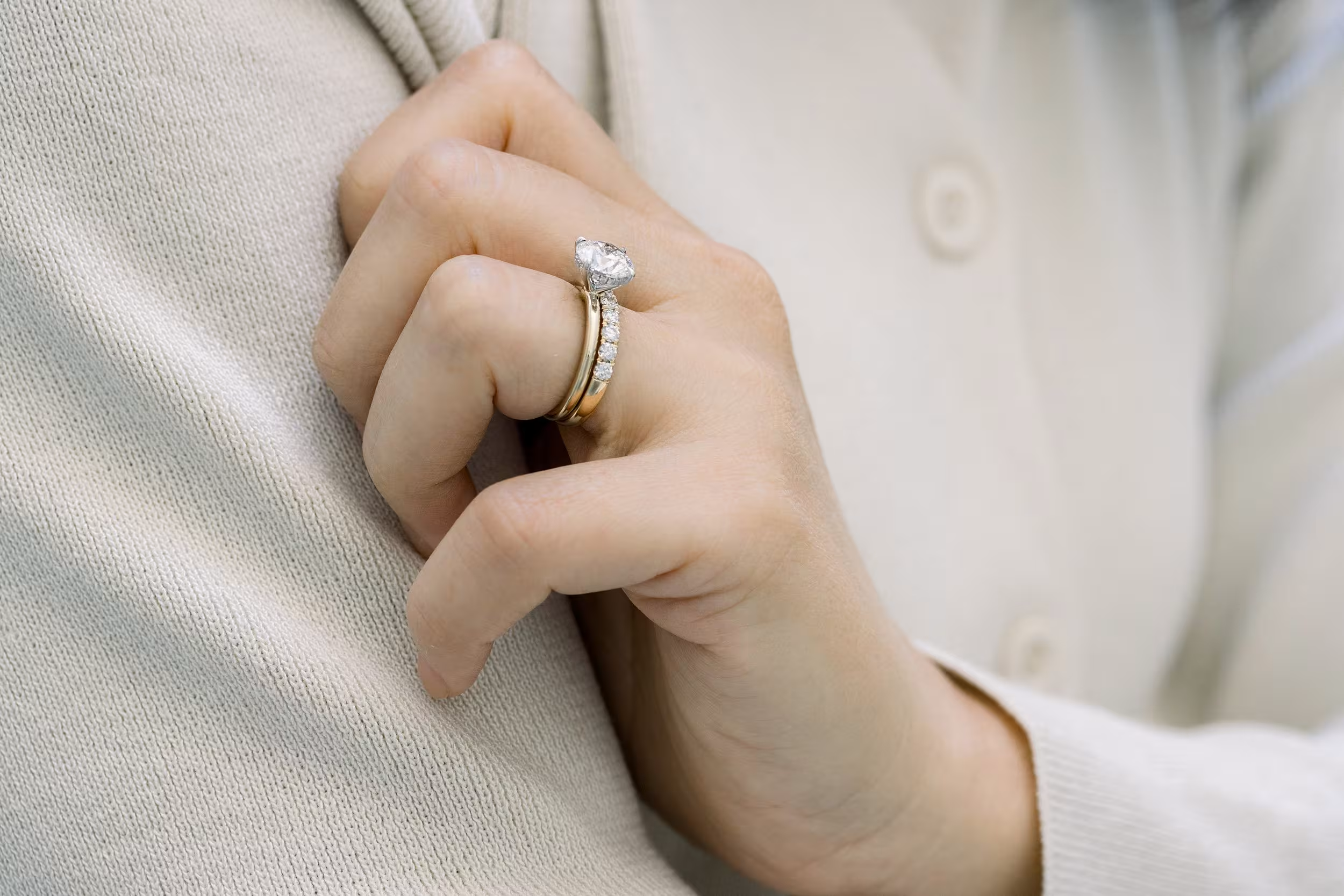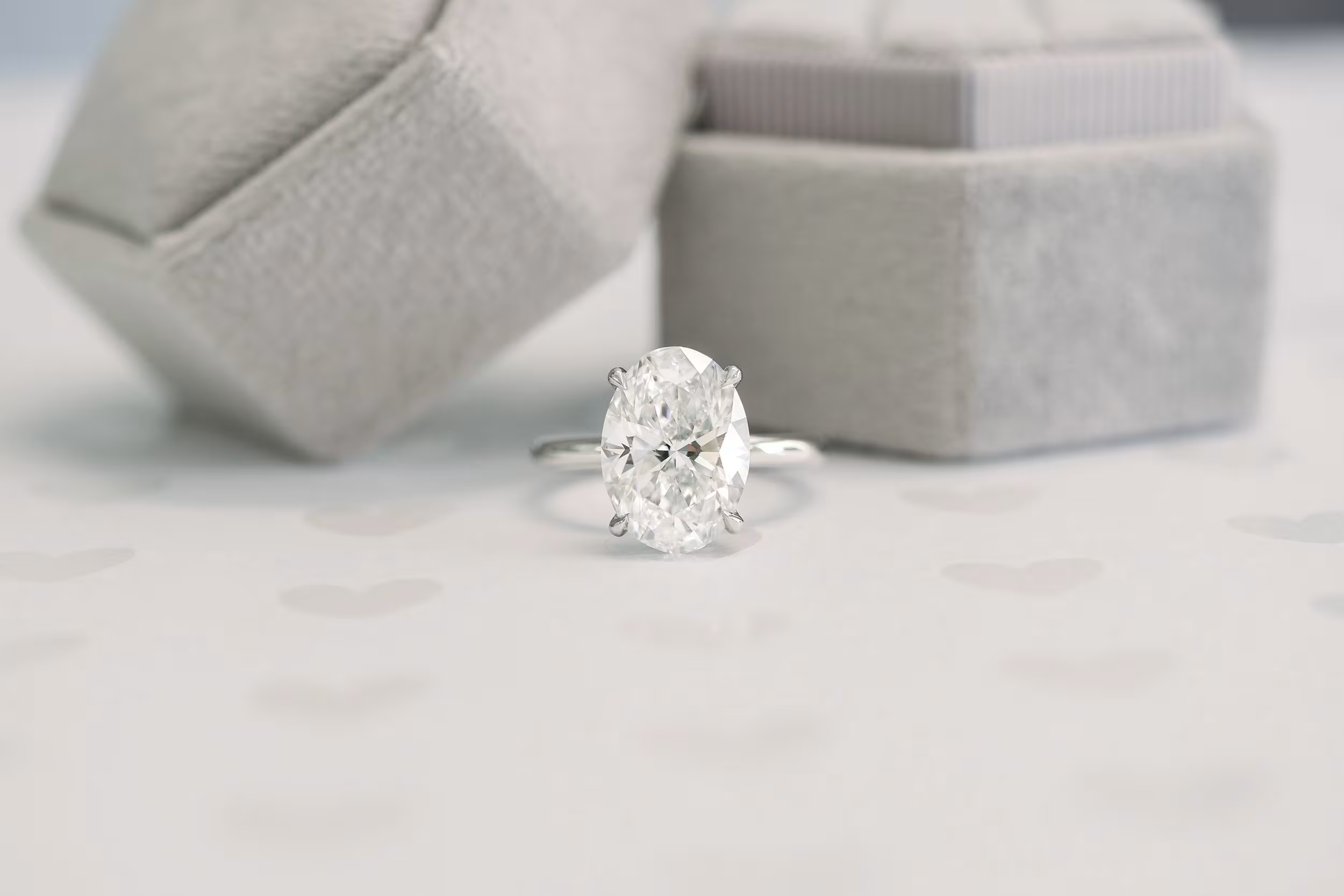14K VS 18K GOLD: WHAT'S THE DIFFERENCE
14k or 18k? What’s the difference? Is one better than the other? These are super common questions and are here to explain the difference so you can pick the best choice!

What Does Karat Actually Mean?
“Karat” (abbreviated as “k”) refers to how much pure gold is in a piece of metal. Since pure gold is soft and not ideal for everyday wear, it’s mixed with other metals (like silver, copper, and zinc) to improve durability.
- 18k gold contains 75% pure gold, giving it a rich, warmer tone noticeable in yellow and rose gold styles.
- 14k gold contains 58.3% pure gold, resulting in a slightly paler color but better resistance to wear and tear.

Durability: Which Gold Is Best for Everyday Wear?
If you live a very active or hands-on lifestyle, 14k gold is typically the better choice. It’s more resistant to scratches, dings, and signs of wear.
On the other hand, 18k gold is softer and more prone to scratches. If your jewelry is primarily worn on special occasions or you prefer the softer look of 18k gold, it may be the ideal choice. There’s nothing wrong with having both!

Color: Warm vs. Rich
- 18k yellow gold has a deeper, more golden hue
- 14k yellow gold has a slightly softer, warmer look
- With rose gold, 14k tends to look pinker, while 18k has a more coppery tone
These differences are subtle there’s no “better” option here, just personal preference and what you like on your skin tone!

Sensitive Skin? Here's What to Know
Both 14k and 18k gold are considered safe for most people. However, 18k gold has fewer alloyed metals and is less likely to cause irritation, making it a great option for those with sensitive skin. Still, 14k gold is generally well tolerated and widely worn without issue.

Gold remains one the most popular choices for engagement ring settings, and an excellent choice for a look that’s both timeless and affordable. You may be wondering “should I choose 14k or 18k gold for my engagement ring”?
Pure gold is too soft for everyday wear and would not stand the test of time as an engagement ring setting. The gold in your engagement ring setting is mixed with other metals, such as silver, copper, nickel and zinc to make your jewelry more durable. The karatage refers to the percentage of pure gold in the alloy: 18k gold contains 75% gold, 14k gold contains 58.3% gold.
Because 14k gold contains a higher percentage of alloyed metals it provides more durability and resistance to wear and tear. 14k gold can be an excellent choice for those with more active lifestyles.
18k yellow gold has a brighter and more vivid appearance. 18k rose gold has a more brassy appearance as opposed to 14k rose gold which is more pink.
Examples of 14k Yellow Gold Engagement Rings
Examples of 18k Yellow Gold Engagement Rings
Examples of 14k Rose Gold Engagement Rings
Examples of 18k Rose Gold Engagement Rings
